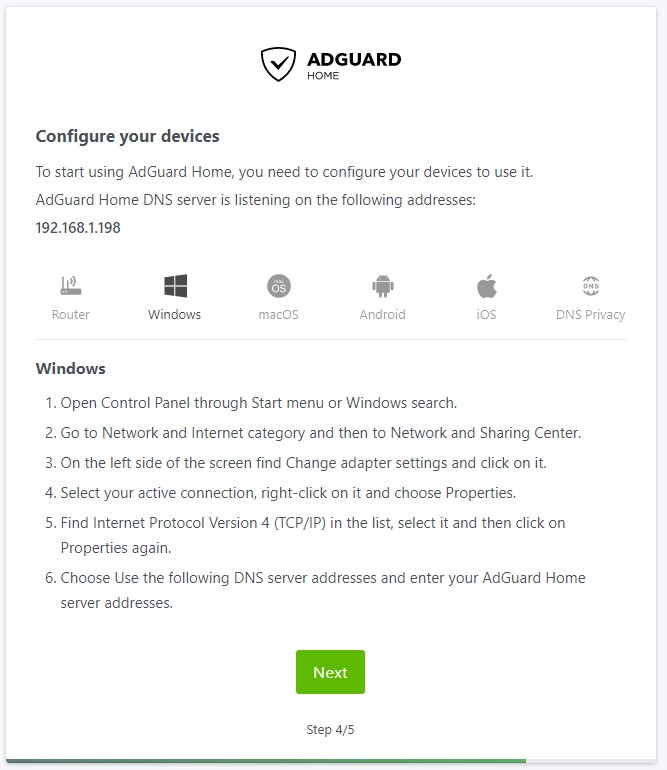
The corresponding release must be downloaded and unpacked. Since it is programmed in Go, many architectures are already supported: Adguard Home can be started automatically via /etc/rc.local by simply executing the binary.DNS over TLS and HTTPS are supported by default.The DNS server can be operated in parallel to dnsmasq.Adguard Home comes with its own web interface, which can be accessed on a self-selected port.The big advantage over Pi-Hole is that Adguard Home does not need any dependencies and can be started from a single binary file.The DNS lists can be copied 1:1 from Pi-Hole or equivalent sources. I‘m running Adguard Home on a Netgear R7800.Īds/trackers/malware etc. To use Adguard Home on an OpenWrt router you need at least 20 MB free storage and about 100 MB free RAM (it can be started from a USB stick the more RAM, the better). If you face any issue regarding this article please share your thoughts.This is a small guide for Adguard Home, an equivalent alternative to Pi-Hole.




We need to click on Get Started to start the setup. Let’s start the setup of our AdGuard server now.Once the setup complete we can access our AdGuard server from the below command.To know the IP address of your Pi you can use the command.We can go ahead and install the AdGuard Home on our Pi.Now we can move to the extracted folder.As the file is already downloaded and extracted then we can delete the old file using the below-mentioned command.Now, we can extract the AdGuard setup using the below command.After the update and upgrade complete we can download the AdGaurd from the below command.Once the setup completes we need to update, upgrade and full-upgrade our raspberry pi using the terminal.


 0 kommentar(er)
0 kommentar(er)
